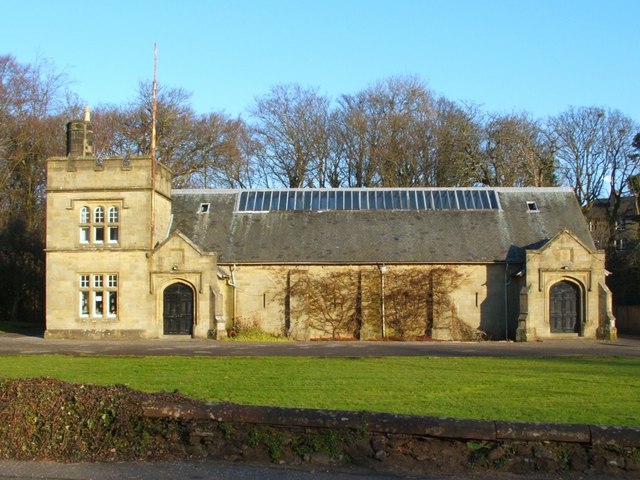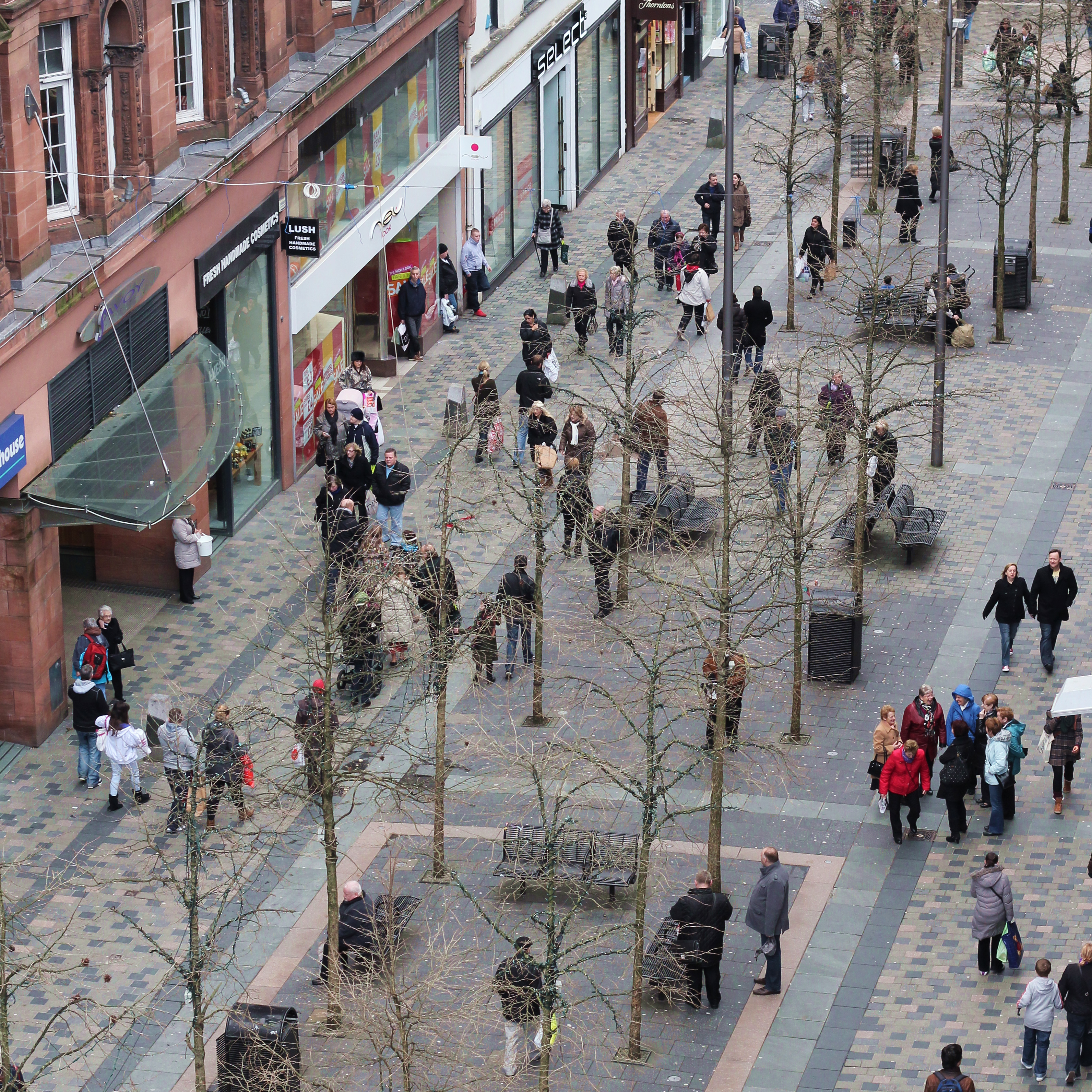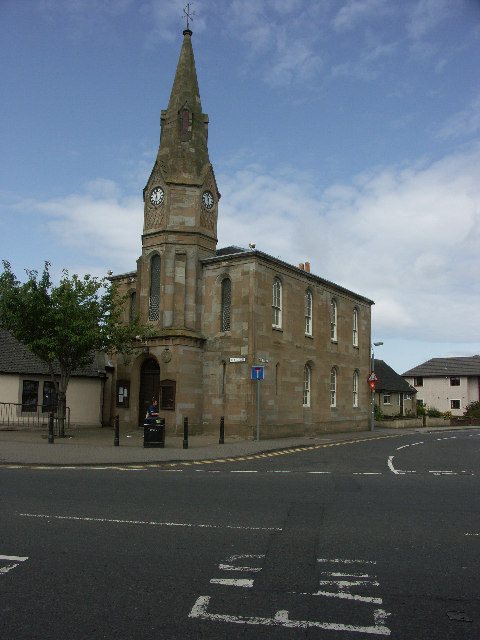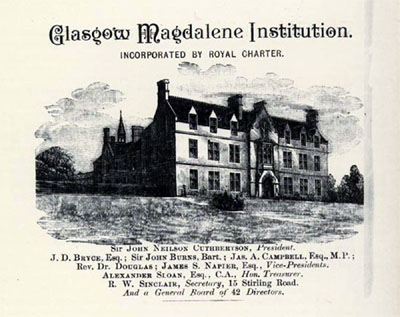|
Honeyman And Keppie
Honeyman and Keppie was a major architectural firm based in Glasgow, created by John Honeyman and John Keppie in 1888 following the death of James Sellars in whose architectural practice Keppie had worked. Their most notable employee was Charles Rennie MacKintosh, who started as a draughtsman in April 1889Dictionary of Scottish Architects:John Keppie and rose to partner level. The creation of the new Honeyman, Keppie and MacKintosh marked the next phase in the evolution of the practice which as Honeyman and Keppie existed from 1888 to 1904. Whilst often viewed independently, Mackintosh did much of his most notable work while employed in the firm. Other notable employees include James Herbert MacNair who began as an apprentice in the firm in 1894, and David Forbes Smith. The majority of their work is in Glasgow but they received several church commissions in other towns and had connections to several small towns and villages such as Skelmorlie, Kilmacolm, and Kirkintilloch, lea ... [...More Info...] [...Related Items...] OR: [Wikipedia] [Google] [Baidu] |
Glasgow
Glasgow ( ; sco, Glesca or ; gd, Glaschu ) is the most populous city in Scotland and the fourth-most populous city in the United Kingdom, as well as being the 27th largest city by population in Europe. In 2020, it had an estimated population of 635,640. Straddling the border between historic Lanarkshire and Renfrewshire, the city now forms the Glasgow City Council area, one of the 32 council areas of Scotland, and is governed by Glasgow City Council. It is situated on the River Clyde in the country's West Central Lowlands. Glasgow has the largest economy in Scotland and the third-highest GDP per capita of any city in the UK. Glasgow's major cultural institutions – the Burrell Collection, Kelvingrove Art Gallery and Museum, the Royal Conservatoire of Scotland, the Royal Scottish National Orchestra, Scottish Ballet and Scottish Opera – enjoy international reputations. The city was the European Capital of Culture in 1990 and is notable for its architecture, cult ... [...More Info...] [...Related Items...] OR: [Wikipedia] [Google] [Baidu] |
Craigton Cemetery
Craigton Cemetery is a cemetery in south-west Glasgow dating from the mid-19th century. It stands on Berryknowes Road. The cemetery has a Jewish section containing 230 graves. The cemetery also contains 251 commonwealth war graves from the First and Second World Wars. Partly due to the proximity to Ibrox Stadium, the cemetery has strong links to Rangers Football Club. The original entrance is to the south-east. A new entrance to the north was created to serve the crematorium. The north half of the cemetery is relatively flat and open. The south half slopes fairly steeply south to north and is more densely filled with monuments. Vandalism in the cemetery is widespread. History The cemetery was established in 1871 by the Craigton Cemetery Company to serve south-west Glasgow, Govan and Partick. The original cemetery extended to 30 acres on lands of Wester Craigton and Merrylands, previously owned by Robert Urquhart. The main shareholder was Thomas Reid (1831-1900) of the Govan ... [...More Info...] [...Related Items...] OR: [Wikipedia] [Google] [Baidu] |
Sauchiehall Street
Sauchiehall Street () is one of the main shopping streets in the Glasgow city centre, city centre of Glasgow, Scotland, along with Buchanan Street and Argyle Street, Glasgow, Argyle Street. Although commonly associated with the city centre, Sauchiehall Street is over in length. At its central west end is Charing Cross, Glasgow, Charing Cross, followed by the Category-A listed crescents and terraces which lead up to Park District, Glasgow, Park Circus, finally meeting Argyle Street in the West End of Glasgow, West End in front of Kelvingrove Park and the Kelvingrove Museum, where they merge to form Dumbarton Road, continuing through Partick. Name Sauchiehall is a corruption of the Old English and Scots language, Scots , ; abounding in Salix caprea, willows and ; a low-lying meadow by the side of a river (compare Sausalito, California). is pronounced 'haw' in Scots and can be mistaken for the Scots , pronounced the same, meaning hall. History At its height, from 1880 to the 1 ... [...More Info...] [...Related Items...] OR: [Wikipedia] [Google] [Baidu] |
Gigha
Gigha (; gd, Giogha, italic=yes; sco, Gigha) or the Isle of Gigha (and formerly Gigha Island) is an island off the west coast of Kintyre in Scotland. The island forms part of Argyll and Bute and has a population of 163 people. The climate is mild with higher than average sunshine hours and the soils are fertile. The main settlement is Ardminish. Gigha has been inhabited continuously since prehistoric times. It may have had an important role during the Kingdom of Dalriada and is the ancestral home of Clan MacNeill. It fell under the control of the Norse and the Lords of the Isles before becoming incorporated into modern Scotland and saw a variety of conflicts during the medieval period. The population of Gigha peaked at over 700 in the eighteenth century, but during the 20th century the island had numerous owners, which caused various problems in developing the island. By the beginning of the 21st century the population had fallen to 98. However a "community buy-out" in 2002 h ... [...More Info...] [...Related Items...] OR: [Wikipedia] [Google] [Baidu] |
Achamore House
Achamore House is a mansion on the Isle of Gigha, Scotland. It was built in 1884 for Lt-Col William James Scarlett, and the extensive gardens were laid out by Sir James Horlick from 1944. The house is protected as a category B listed building, while the grounds are included in the Inventory of Gardens and Designed Landscapes in Scotland. History The island of Gigha was formerly the property of the Clan McNeill until John Carstairs MacNeill, who sold the island in 1856 to James Williams Scarlett, second son of William Anglin Scarlett, for £49,000. James Scarlett's son, Lt-Col William James Scarlett, a veteran of the Crimean War like his cousin William Scarlett, 3rd Baron Abinger, built Achamore House in 1884. The house was designed by John Honeyman of Honeyman and Keppie Architects. After it was damaged by fire in 1896, John Honeyman was again employed to restore and remodel the house, which was completed in 1900. The island remained in the Scarlett family until 1919 when i ... [...More Info...] [...Related Items...] OR: [Wikipedia] [Google] [Baidu] |
Prestwick
Prestwick ( gd, Preastabhaig) is a town in South Ayrshire on the west coast of Ayrshire in Scotland about southwest of Glasgow. It adjoins the larger town of Ayr to the south on the Firth of Clyde coast, the centre of which is about south, and the small village of Monkton, Ayrshire, Monkton to the north. It had a population of 14,901 at the 2011 census. The town is served by Glasgow Prestwick Airport, which serves many European destinations as well as transatlantic and other international cargo flights. The town was the first home of The Open Championship, the Open Golf Championship, which was played on the Prestwick Golf Club, Prestwick Old Course from 1860 to 1872. History Prestwick's name comes from the Old English for, ''priest's farm'': ''preost'' meaning "priest" and ''wic'' meaning "farm". The town was originally an outlying farm of a religious house. George T. Flom suggested that the name was of Old Norse origin. In this case, it would mean "priest's bay". From ... [...More Info...] [...Related Items...] OR: [Wikipedia] [Google] [Baidu] |
Glasgow Magdalene Institution
The Glasgow Magdalene Institution (Glasgow’s Magdalene Institution for the Repression of Vice and Rehabilitation of Penitent Females was its official name) was an asylum in Glasgow, Scotland, initially started in 1812 and was open until 1958. The institution was started in response to the increasing worries of prostitution, the spread of venereal diseases and wavering moral values seen in the country, and sought to "rescue" women or girls who were deemed "prostitutes" and teach them how to support themselves through industrial training mainly through the laundries. History of the Institution With its establishment in 1812 it had originated on Parliamentary Road until it moved to Lochburn Home in 1864 where it remained until its closure. It was non-denominational and was funded by voluntary subscriptions – as well as the income generated from being a working laundry. The women in the asylum were generally termed as prostitutes, however, this term was used in a very loose ma ... [...More Info...] [...Related Items...] OR: [Wikipedia] [Google] [Baidu] |
Stirlingshire
Stirlingshire or the County of Stirling, gd, Siorrachd Sruighlea) is a Counties of Scotland, historic county and registration countyRegisters of Scotland. Publications, leaflets, Land Register Counties. of Scotland. Its county town is Stirling. It borders Perthshire to the north, Clackmannanshire and West Lothian to the east, Lanarkshire to the south, and Dunbartonshire to the south-east and south-west (this latter boundary is split in two owing to Dunbartonshire's Cumbernauld exclave). Coat of arms The County Council of Stirling was granted a coat of arms by Lord Lyon King of Arms on 29 September 1890. The design of the arms commemorated the Scottish victory at the Battle of Bannockburn in the county. On the silver saltire on blue of St Andrew was placed the rampant red lion from the royal arms of Scotland. Around this were placed two caltraps and two spur-rowels recalling the use of the weapons against the English cavalry. On the abolition of the Local Government counc ... [...More Info...] [...Related Items...] OR: [Wikipedia] [Google] [Baidu] |
Lennoxtown
Lennoxtown ( gd, Baile na Leamhnachd, ) is a town in East Dunbartonshire council area and the historic county of Stirlingshire, Scotland at the foot of the Campsie Fells, which are just to the north. The town had a population of 4,094 at the 2011 UK Census. History The focus of Lennoxtown area used to be the busy Lennox Mill, where tenants of the Woodhead estate brought their corn to be ground. There were several corn mills. Lennox Mill was located in the vicinity of the recently demolished Kali Nail Works. A significant event in the history of the locality was the establishment of the calico printing works at Lennoxmill during the late 1780s. It was on a site adjacent to the old corn mill. Calico is a type of cotton cloth, the printing of cotton cloth was soon established as the major industry in the area, also at Milton of Campsie. Calico was constructed during the late eighteenth and early nineteenth centuries to provide accommodation for the block makers and other cotton ... [...More Info...] [...Related Items...] OR: [Wikipedia] [Google] [Baidu] |
Kelvinside
Kelvinside is a district in the Scottish city of Glasgow. It is situated north of the River Clyde and is bounded by Broomhill, Dowanhill and Hyndland to the south with Kelvindale and the River Kelvin to the north. It is an affluent area of Glasgow, with large Victorian villas and terraces. As with Morningside, Edinburgh, residents are sometimes said to have a " pan loaf" accent, i.e. an affected one. This often leads to jokes about a "Kelvinsaide" accent. Both of these areas were featured in an advert for ScotRail.https://www.youtube.com/watch?v=mKYTtKe_mGM Glasgow Vs Edinburgh - ScotRail TV commercial Kelvinside railway station was on the Lanarkshire and Dunbartonshire Railway, but is now closed. Kelvinside is home to Kelvinside Academy, a private school situated on the corner of Kirklee Road and Bellshaugh Road. At the corner of Kirklee Road and Great Western Road is a shop called Churchill's. Churchill's began life as a green hut just a little bigger than an average-si ... [...More Info...] [...Related Items...] OR: [Wikipedia] [Google] [Baidu] |
Muckhart
Muckhart ( gd, Muc-Àird) commonly refers to two small villages in Clackmannanshire, Scotland, Pool of Muckhart ( gd, Poll Mhuc-Àird) and Yetts o' Muckhart. Muckhart is one of the Hillfoots Villages, situated on the A91 around northeast of Dollar. The Gaelic name, Muc-àird, comes from ''muc'' ("pig") + ''àird'' ("height"), and may derive from the fact that the surrounding fields may once have been used for pig farming. Previously Muckhart, together with Glendevon, formed the southernmost tip of Perthshire. It was transferred to Clackmannanshire in a reorganisation of boundaries in 1971. The parish boundary is somewhat eccentric and extends to the outer edge of Dollar, some west. Due to this fact, the primary school is somewhat oddly located (the 1876 Act required the school to be at the centre of the parish) and lies over west of the outer edge of the main village. It is also some considerable distance from the main road. This can be explained in that it lies on the old ... [...More Info...] [...Related Items...] OR: [Wikipedia] [Google] [Baidu] |
Linlithgow
Linlithgow (; gd, Gleann Iucha, sco, Lithgae) is a town in West Lothian, Scotland. It was historically West Lothian's county town, reflected in the county's historical name of Linlithgowshire. An ancient town, it lies in the Central Belt on an historic route between Edinburgh and Falkirk beside Linlithgow Loch. The town is situated approximately 20 miles (32 km) west of Edinburgh. During the medieval period, the town grew in prominence as a royal burgh and residence around Linlithgow Palace. In later centuries, Linlithgow became a centre of industry in leather making and other materials, before developing rapidly in the Victorian era with the opening of the Union Canal in the 1820s and the arrival of the railway in 1842. Linlithgow was the former county town of the county but the Council now resides in nearby Livingston. Today Linlithgow has less industry and the economy of the town centre is focused on hospitality, heritage and tourism services. Linlithgow's patron saint is ... [...More Info...] [...Related Items...] OR: [Wikipedia] [Google] [Baidu] |








